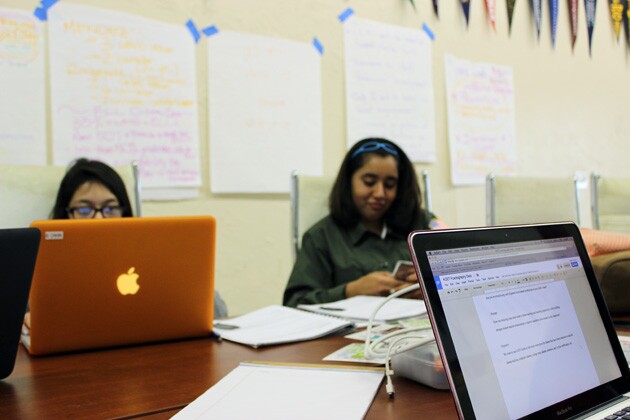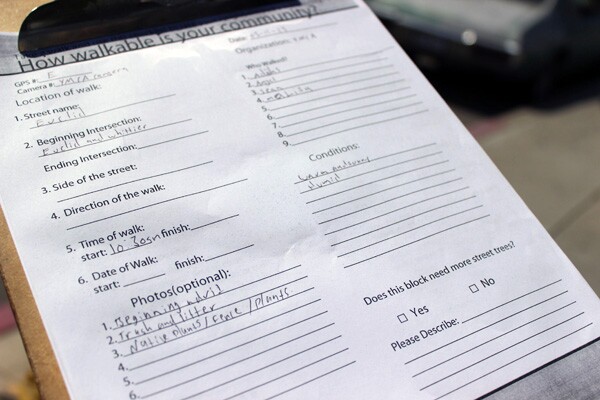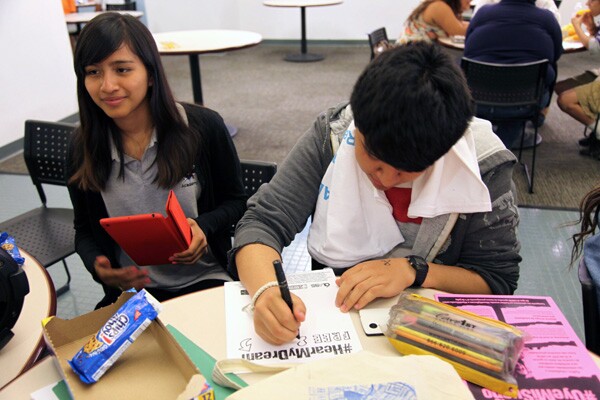Techducation: Embracing Mobile Technology in Our Classrooms


This is part of a series exploring the opportunities and challenges of using mobile technologies to engage and organize communities, produced in partnership with the California Endowment.
I graduated from Garfield High School in 1997 as the Student Body President. I remember running for election and having to draft posters one by one for my campaign. I had to go around and shake hands with my peers and classmates and encourage them to vote for me. It took a tremendous effort, but I won. Throughout the school year, our student council put on events for the student body -- rallies and social gatherings aimed at uplifting school pride. Despite being on a relatively enclosed campus, it was difficult to get the word out. Events often had just a small percentage of the student body, and it never surprised me that the reason was, "I didn't know about it."
That was more than fifteen years ago. Before cell phones were rampant in the hands of high school teenagers. Before tablets were starting to replace laptops. Before your local coffee shop had free wi-fi to check email or hop on Facebook for a couple of hours. So how do we use these modern tools to transform the way a Student Body President is elected? Or to help a Community Based Organization reach out to its neighbors for a community clean up or a town hall, or better yet, to communicate with local elected officials on issues that matter to them?
I've been trying to answer these questions for myself ever since I arrived at the Weingart East Los Angeles (WELA) YMCA to become the Director of the Youth Institute, a digital media and technology program for high school students. More than fifteen years later, I am immersed right back in high school politics, but this time as a mentor and outside observant. I have students in my program with mobile phones, laptops, and DSLR cameras. Yet many of them don't have complete access to broadband connectivity. They pay outrageous prices for cell phone service and sometimes face dangerously high bills because they lack the knowledge of reading the fine print.
Truth be told, like any other tool, when used for its intended purpose, phones can continue to be the revolutionary tool that we need to transform the way we connect to each other. The mere creation of the phone called on us to reach across space and time in order to connect with another human voice.

Today, we are asking phones to provide us the same type of historical significance. And I think we can get there. We need to be teaching practical exercises in schools that are not solely based in textbooks, but using technology usage to educate students. They would learn the simple techniques that can be had when technology is in your hand. Already we use smart phones to chime in on surveys -- to vote for the next American Idol, or donate dollars to a relief cause. Why not use the same method to quiz students in a Jeopardy-like setting and liven up the classroom? I bet we could even save a few trees if students engaged in test-taking on mobile devices instead of filling in bubble options with a number two on reams of paper. I would like for us to challenge the way technology is used in the classroom. Let's use student knowledge that would help us identify needs for educational obstacles. For example, let's use an application that preps students for the Scholastic Aptitude Test. Let's tap into already existing applications like news sources and begin to teach history as it happens now, in real time. Let's reach out across the spectrum of writing and forget about writing essays for English class, and instead publish papers on a local blog or as an editorial for an online news site and still get graded for the assignment.
At my local YMCA in East Los Angeles (where I serve as the Director of Youth Development), we provide services beyond health and fitness. Our Youth Institute program engages high school students in strengthening digital media and technology skills. We want young people to understand the full power of the devices in their hands and use them as tools for social change. Over the course of the last year, our students have been conducting walking audits throughout the streets of Boyle Heights and surveying the safety of streets, damaged sidewalks, and obstructions that might exists in community paths. They take pictures with our point-and-shoot cameras, but they also take pictures on their mobile device. They snap away on their phones and on a couple of tablets we have at the office. And when they are done taking photos, they are uploaded to an online sharing site, creating access for everyone to access. Now, there's a growing album of broken sidewalks and raised curbs and dark walkways needing improvement. All of this information is being generated into a report that will be submitted to the City of Los Angeles in order to improve the overall health and safety of the surrounding neighborhood.
In working with high school students, we aim to meet them where they are. Social media sites continue to play a prevalent role in communicating information to others, and we have transformed our own Facebook fan page to promote significant academic information for students: college application deadlines, scholarship opportunities, and friendly reminders about academic workshops. We have seen a growing increase in awareness for college-related activities and attribute this to the impact of social media sites as an additional source of information.

The trend of application extends beyond school. No less than two weeks ago I had a student approach me needing some advice on Deferred Action for Childhood Arrivals (DACA). Normally, I would be anxious about providing accurate information on such a sensitive subject. However, having recently attended a digital media workshop at the National Council of La Raza conference, I'd learned of great new applications that have been developed to provide information on issues related to immigration. I was able to direct this young man to download the Immigo app and provide him with the most up-to-the-minute information for immigration reform.
One recent community campaign arose from the Building Healthy Communities in Boyle Heights coalition. The committee working on improving policies around school systems consisted of several local non-profits, including the YMCA, InnerCity Struggle, Latino Equality Alliance, and California Center for Public Health Advocacy. Students from CCPHA were hired on as social media ambassadors to do what they do best -- post, Tweet, Instagram, and provide messages related to the Local Control Funding Formula (#LCFF). Students promoted ongoing school budget updates and messages advocating for an increase in counselors and mental health services. One student at Roosevelt High School, Izzy Gutierrez, upgraded her role as a social media ambassador and spoke in front of the School Board at the Los Angeles Unified School District.
Just imagine if we could excite students to civic engagement all the time. I see a future where we have this ability, as well as the ability to develop applications that improve education curriculum in schools. Technology should not be relegated to outside of the classroom. We should open the doors and embrace the power of mobile technology to transform the manner in which students engage with education. I have a strong hope that public education can truly be public education if we begin to look at using mobile technology to expose the classroom and open a new chapter in education.


